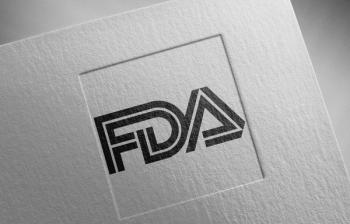
Stage III NSCLC: Enrolling on a Clinical Trial
Transcript: Jyoti D. Patel, MD: After you came to see me and we discussed different treatment options, you elected to go on a clinical trial. That was certainly not an easy decision. Tell me about your experience or factors that went into the decision.
Laura O’Brien: Well, I did some research and was reading about immunotherapy, and I thought, as I told you, that this is the wave of cancer treatment in the future. I was hoping that I was going to get the immunotherapy. We did not have enough tissue, so I had to have another bronchoscopy, and then I had to repeat all the testing, and I think the most difficult part at that point was waiting for treatment to start. It was waiting to be assigned to one of the arms of the trial and to start treatment because with this diagnosis, you just want to start on day one.
Jyoti D. Patel, MD: I think you bring up some great points. I think we’re doing a lot better with clinical trials now. We’re answering better questions, and so many of our studies require that we have correlating tissue because that is, for us, really putting the puzzle together. It’s helping us understand who’s going to benefit the most. And so it can sound like a huge hurdle to a patient and to a physician because we don’t want to delay therapy, but getting those repeat biopsies to be able to correlate what our outcome looks like with biology is important. And it is a very selfless act to have another biopsy or to have another procedure to go on the study. Oftentimes, we’ll ask you to do the biopsy, and then the tissue has to be sent to a sponsor or to the clinical trial office to check for adequacy. And based on what they see, they assign you into a cohort. Oftentimes, that can take a couple of weeks, whereas you would have started three weeks prior.
Laura O’Brien: Right.
Jyoti D. Patel, MD: Tell me about that sort of waiting period.
Laura O’Brien: Well, during the waiting period, I had already taken the leave from work because I wasn’t sure what was going to happen, what was going to be my treatment plan. It was difficult. I had family and friends, everybody, calling daily asking, “Have you heard anything yet? Have you heard anything yet?” That was very difficult to not have a plan to tell people because everybody is so caring. They really want to know what’s going on with you, and they want to know how soon you’re going to get better.
Jyoti D. Patel, MD: Right, absolutely. Another piece I think that you probably also experienced was having to repeat all your studies, right?
Laura O’Brien: Yes.
Jyoti D. Patel, MD: It feels like a lot of work, I’m sure, but do you have thoughts about how we can make clinical trials a little bit easier?
Laura O’Brien: Well, I had to repeat the PET [positron emission tomography] scan and the MRI [magnetic resonance imaging]. I know that the tissue samples were needed for the trial. But possibly when a bronchoscopy is done, they should just take more sample at that time, so you don’t have to repeat it.
Jyoti D. Patel, MD: Right, absolutely. And so I think we have learned that process of looking at our tissue and stewarding our tissue has tremendous implications for treatment down the line for patients. And so I think, because you are an informed patient, asking if you will have enough tissue when you’re talking to the radiologist or the pulmonologist becomes vitally important.
Transcript Edited for Clarity




